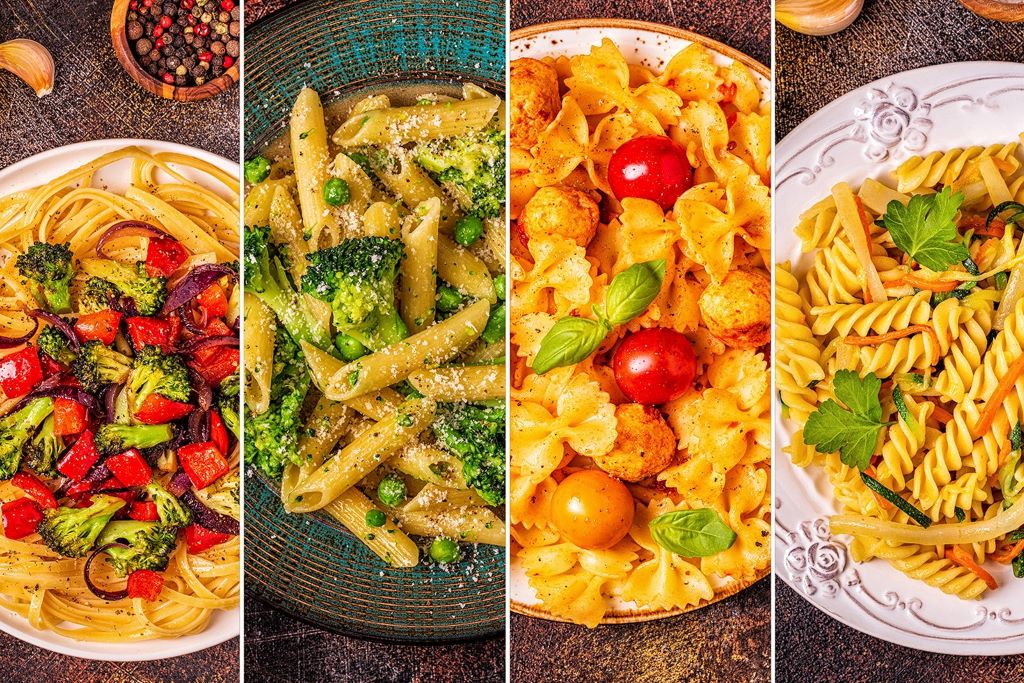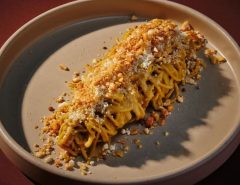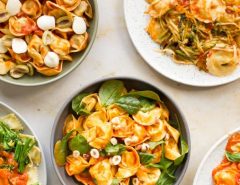Italian cuisine represents one of the world’s most beloved culinary traditions. Among its treasures, pasta dishes stand as timeless classics that have captured hearts globally. These five essential Italian pasta dishes offer the perfect starting point for home cooks seeking authentic flavors. From the creamy richness of Carbonara to the fresh simplicity of Aglio e Olio, mastering these recipes will transform your kitchen into a piece of Italy. Each dish tells a story of regional tradition and family heritage. Therefore, learning these fundamental pasta preparations opens doors to understanding Italian cooking philosophy. Additionally, these recipes use simple ingredients that create extraordinary results through proper technique.
Why Learning Traditional Italian Pasta Dishes Matters Significantly
Understanding authentic Italian pasta dishes connects you to centuries of culinary evolution. These recipes represent more than just meals. They embody cultural identity and regional pride across Italy’s diverse landscape.
Furthermore, mastering these classic preparations builds essential cooking skills. The techniques you learn transfer to countless other recipes. Therefore, investing time in perfecting these dishes pays dividends throughout your culinary journey.

Essential Italian Pasta Cooking Techniques Every Home Chef Needs
Before diving into specific recipes, understanding fundamental pasta cooking principles ensures success. Proper water-to-pasta ratios create the perfect texture. Additionally, timing becomes crucial for achieving that coveted al dente bite.
Salt plays a vital role beyond flavoring. It affects texture and helps pasta absorb sauce properly. Moreover, reserving pasta cooking water provides starch for silky sauce consistency. These details separate good pasta from extraordinary Italian pasta dishes.
Spaghetti Carbonara: Rome’s Creamy Masterpiece Without Heavy Cream
Carbonara originated in Rome during World War II. This dish combines eggs, cheese, pancetta, and black pepper. However, many home cooks struggle with proper technique.
The secret lies in temperature control. Hot pasta cooks the eggs gently while stirring creates creaminess. Additionally, using quality Pecorino Romano cheese makes significant difference. Never add cream to authentic Carbonara. Instead, pasta water and vigorous stirring create the signature silky texture.
My first attempt at Carbonara resulted in scrambled eggs. Therefore, I learned patience and proper timing matter most. Practice this technique repeatedly until muscle memory develops.
Fettuccine Alfredo: Understanding Italy’s Most Misunderstood Classic Dish
Authentic Fettuccine Alfredo contains only butter, Parmigiano-Reggiano, and pasta water. Roman restaurateur Alfredo di Lelio created this dish in 1914. However, American adaptations often include heavy cream.
The traditional method involves vigorous mixing of hot pasta with butter and cheese. Additionally, pasta water helps achieve proper consistency. Therefore, technique matters more than ingredients in this simple preparation.
According to research from the Italian Trade Agency, authentic Italian recipes use fewer ingredients than international adaptations. This study emphasizes how simplicity defines true Italian cooking philosophy.
Cacio e Pepe: The Three-Ingredient Wonder That Challenges Professional Chefs
Cacio e Pepe translates to “cheese and pepper.” This Roman dish uses only Pecorino Romano, black pepper, and pasta water. However, its simplicity makes execution incredibly challenging.
The key involves creating an emulsion between cheese and starchy pasta water. Additionally, timing and temperature control prevent the cheese from clumping. Therefore, this dish tests fundamental pasta cooking skills.
Professional chefs often struggle with Cacio e Pepe because there’s nowhere to hide mistakes. Each element must work perfectly together. Moreover, the technique requires practice and patience to master completely.
Aglio e Olio: Midnight Pasta That Showcases Italian Ingredient Philosophy
Aglio e Olio originated as a late-night dish using pantry staples. This Neapolitan creation combines garlic, olive oil, red pepper flakes, and parsley. Additionally, it represents Italian cooking’s core philosophy of maximizing few ingredients.
The technique involves slowly cooking garlic in olive oil without browning. Furthermore, pasta water helps create a light sauce that coats each strand. Therefore, quality ingredients become essential since there’s nothing to mask inferior flavors.
This dish taught me how Italian cooking celebrates ingredient purity. Each component must shine individually while harmonizing with others. Additionally, proper timing prevents garlic from becoming bitter or burnt.
Penne all’Arrabbiata: Fiery Roman Dish With Perfect Balance of Heat
Arrabbiata means “angry” in Italian, referring to the dish’s spicy character. This Roman creation combines tomatoes, garlic, red chilies, and olive oil. However, balance prevents the heat from overwhelming other flavors.
The sauce starts with slowly cooked garlic and chilies. Additionally, quality canned tomatoes provide sweetness that balances the heat. Therefore, ingredient selection significantly impacts the final result.
According to data from Italy’s National Statistics Institute, Romans consume pasta dishes like Arrabbiata 3.2 times per week on average. This statistic highlights how integral these recipes remain in Italian daily life.
Common Mistakes When Preparing Traditional Italian Pasta Dishes
Several errors plague home cooks attempting these classic recipes:
- Using insufficient salt in pasta water
- Adding ingredients not found in traditional recipes
- Overcooking pasta beyond al dente texture
- Failing to reserve pasta cooking water
- Using pre-grated cheese instead of freshly grated
- Rushing the cooking process without proper timing
Additionally, many cooks add unnecessary ingredients thinking they improve the dish. However, traditional Italian pasta dishes achieve perfection through restraint and technique rather than complexity.
Essential Equipment for Mastering These Five Italian Pasta Classics
Success requires minimal but quality equipment. A large pot ensures pasta cooks evenly without sticking. Additionally, a reliable cheese grater produces fluffy Parmigiano-Reggiano and Pecorino Romano.
Furthermore, wooden spoons help with gentle stirring that prevents breaking delicate sauces. Tongs allow proper pasta manipulation during the crucial finishing steps. Therefore, investing in these basic tools improves results significantly.
Ingredient Selection Tips for Authentic Italian Pasta Dish Preparation
Quality ingredients form the foundation of exceptional Italian pasta dishes. Choose imported Italian cheeses when possible. Additionally, extra virgin olive oil should taste fruity with slight bitterness.
Moreover, pasta shape matters for sauce adherence. Long pasta works best for oil-based sauces. However, short pasta holds chunky sauces more effectively. Therefore, matching pasta shapes to specific sauces improves overall dish harmony.

Nutritional Benefits of These Traditional Italian Pasta Dishes
These classic preparations offer surprising nutritional value. Pasta provides complex carbohydrates for sustained energy. Additionally, cheese supplies protein and calcium for bone health.
Furthermore, olive oil contains healthy monounsaturated fats. Garlic offers antioxidant properties and immune system support. Therefore, these Italian pasta dishes contribute to a balanced Mediterranean diet when consumed in moderation.
Serving Suggestions and Wine Pairings for Maximum Enjoyment
Proper presentation enhances the dining experience. Warm plates prevent pasta from cooling quickly. Additionally, serving immediately after preparation ensures optimal texture and temperature.
Wine pairings complement each dish’s unique character. Light white wines work beautifully with Aglio e Olio. However, robust reds enhance Arrabbiata’s spicy profile. Therefore, thoughtful beverage selection elevates the entire meal.
Conclusion
Mastering these five Italian pasta dishes opens doors to authentic Italian cooking. Each recipe teaches fundamental techniques while celebrating ingredient simplicity. From Carbonara’s creamy elegance to Arrabbiata’s fiery passion, these classics represent Italy’s culinary soul. Related Topics: Top 10 Italian pasta dishes
Additionally, these dishes prove that exceptional food doesn’t require complicated techniques or expensive ingredients. Instead, they showcase how patience, practice, and respect for tradition create memorable meals. Therefore, start with one recipe and gradually build your repertoire.
Furthermore, sharing these Italian pasta dishes with family and friends continues centuries-old traditions. Each plate connects you to generations of Italian cooks who perfected these timeless preparations. Begin your journey today and discover why these classics remain beloved worldwide.
Which Italian pasta dish will you master first? Share your cooking experiences in the comments below and inspire fellow home chefs on their culinary journey!
Frequently Asked Questions
What makes authentic Italian pasta different from other preparations?
Authentic Italian pasta focuses on high-quality ingredients and traditional techniques passed down through generations. These dishes use fewer ingredients but emphasize perfect execution and timing.
Can I substitute ingredients in these classic Italian pasta recipes?
Traditional Italian pasta dishes work best with authentic ingredients. However, you can make substitutions if necessary, though the flavor profile may change from the original recipe.
How do I prevent my Carbonara from becoming scrambled eggs?
Remove the pan from the heat before adding the egg mixture. Additionally, stir constantly while slowly adding hot pasta to create a creamy emulsion rather than a scrambled texture.
What’s the proper pasta-to-water ratio for cooking Italian pasta dishes?
Use approximately 4-6 quarts of water per pound of pasta. Additionally, add 1-2 tablespoons of salt to the boiling water for proper seasoning and texture.
How long should I cook pasta to achieve a perfect al dente texture?
Cook pasta 1-2 minutes less than the package directions suggest. Additionally, taste test frequently during the final minutes to achieve the desired firm yet tender bite.





Leave a Reply